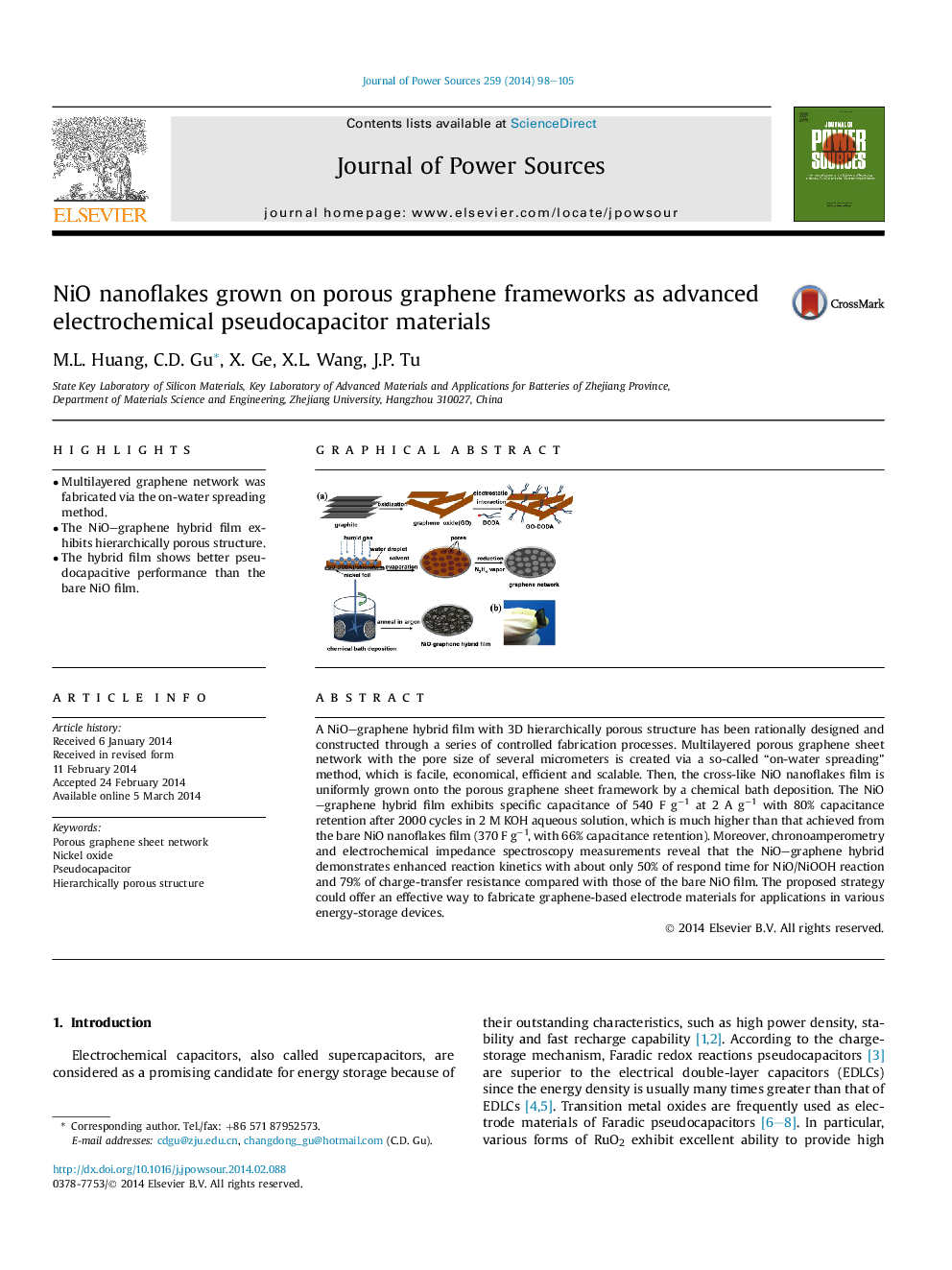| Article ID | Journal | Published Year | Pages | File Type |
|---|---|---|---|---|
| 1286880 | Journal of Power Sources | 2014 | 8 Pages |
•Multilayered graphene network was fabricated via the on-water spreading method.•The NiO–graphene hybrid film exhibits hierarchically porous structure.•The hybrid film shows better pseudocapacitive performance than the bare NiO film.
A NiO–graphene hybrid film with 3D hierarchically porous structure has been rationally designed and constructed through a series of controlled fabrication processes. Multilayered porous graphene sheet network with the pore size of several micrometers is created via a so-called “on-water spreading” method, which is facile, economical, efficient and scalable. Then, the cross-like NiO nanoflakes film is uniformly grown onto the porous graphene sheet framework by a chemical bath deposition. The NiO–graphene hybrid film exhibits specific capacitance of 540 F g−1 at 2 A g−1 with 80% capacitance retention after 2000 cycles in 2 M KOH aqueous solution, which is much higher than that achieved from the bare NiO nanoflakes film (370 F g−1, with 66% capacitance retention). Moreover, chronoamperometry and electrochemical impedance spectroscopy measurements reveal that the NiO–graphene hybrid demonstrates enhanced reaction kinetics with about only 50% of respond time for NiO/NiOOH reaction and 79% of charge-transfer resistance compared with those of the bare NiO film. The proposed strategy could offer an effective way to fabricate graphene-based electrode materials for applications in various energy-storage devices.
Graphical abstractFigure optionsDownload full-size imageDownload as PowerPoint slide
